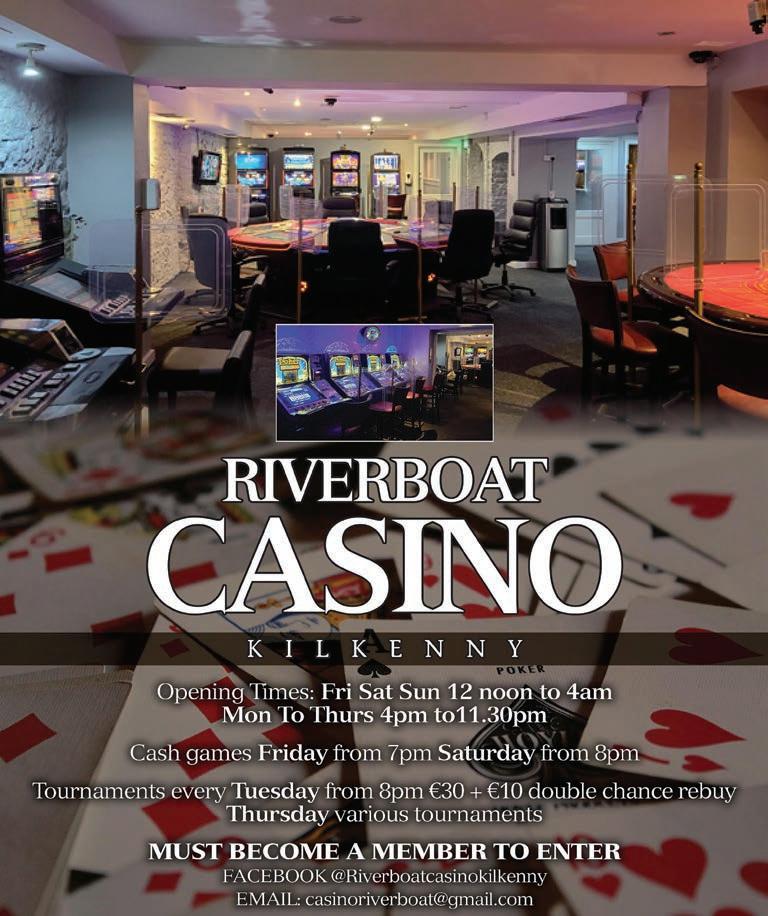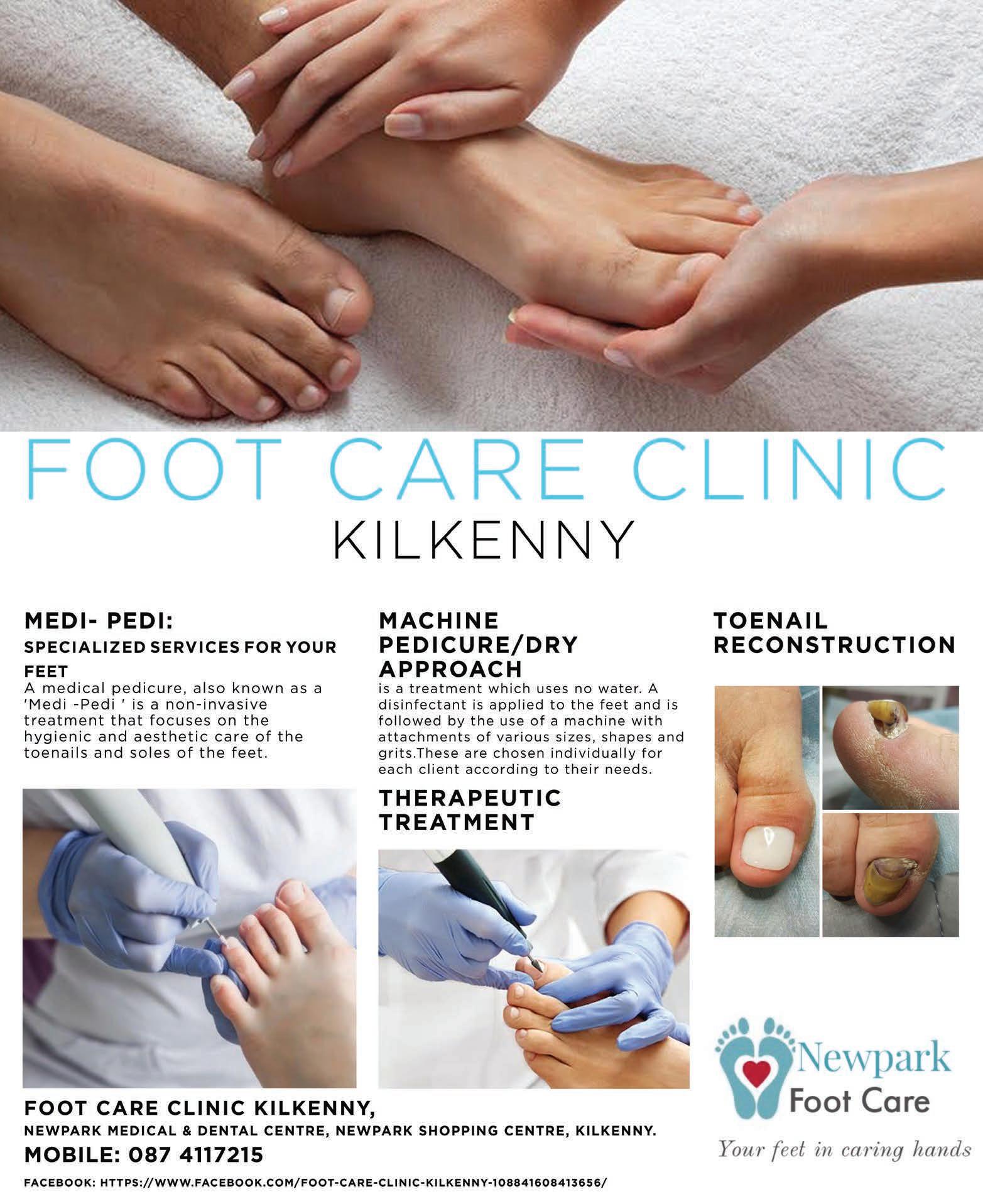
30 minute read
Global Report

Hundreds of blue, green and grey tents are pitched under the sun’s searing rays in downtown Phoenix, Arizona, a jumble of imsy canvas and plastic along dusty sidewalks. Here, according to the Associated Press,i n the hottest big city in America, thousands of homeless people swelter as the summer’s triple digit temperatures arrive. e sti ing tent city has ballooned amid pandemic-era evictions and surging rents that have dumped hundreds more people onto the sizzling streets that grow eerily quiet when temperatures peak in the midafternoon. A heat wave earlier this month brought temperatures of up to 114 degrees (45.5 Celsius) — and it’s only June. Highs reached 118 degrees (47.7 Celsius) last year.
Advertisement
“During the summer, it’s pretty hard to nd a place at night that’s cool enough to sleep without the police running you o ,” said Chris Medlock, a homeless Phoenix man known on the streets as ‘T-Bone’ who carries everything he owns in a small backpack and often beds down in a park or a nearby desert preserve to avoid the crowds.
“If a kind soul could just o er a place on their couch indoors maybe more people would live,” Medlock said at a dining room where homeless people can get some shade and a free meal.
Excessive heat causes more weather-related deaths in the US than hurricanes, ooding and tornadoes combined.
Around the country, heat contributes to some 1,500 deaths annually, and advocates estimate about half of those people are homeless.
Temperatures are rising nearly everywhere because of global warming, combining with brutal drought in some places to create more intense, frequent and longer heat waves. e past few summers have been some of the hottest on record.
Just in the county that includes Phoenix, at least 130 homeless people were among the 339 individuals who died from heat-associated causes in 2021.
“If 130 homeless people were

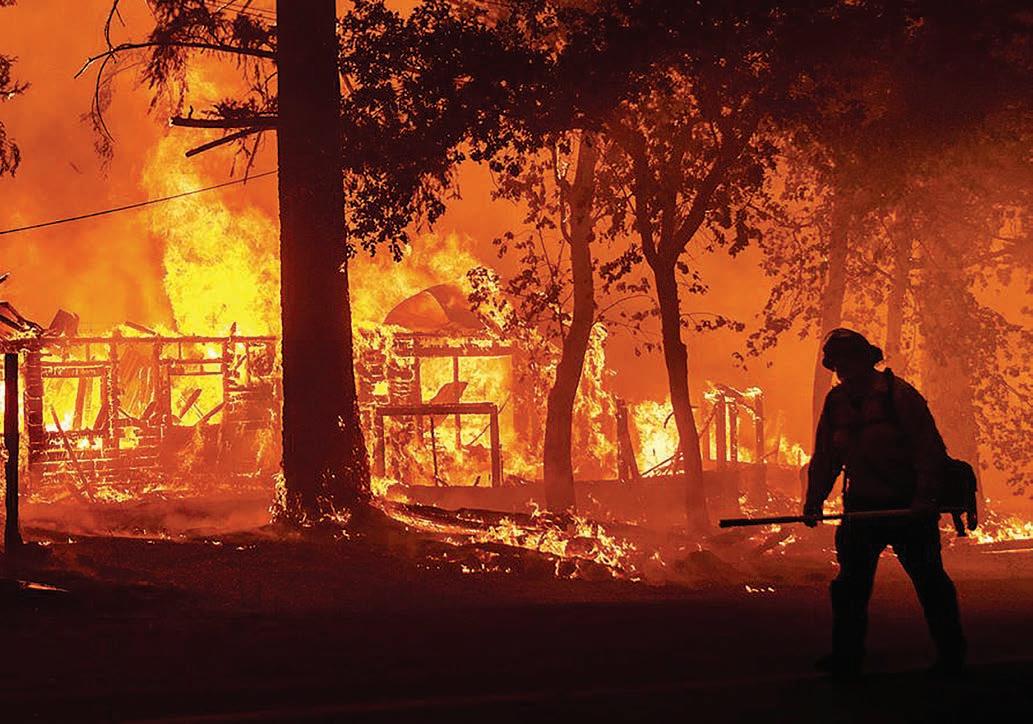
World on fire
Climate change heat contributes to some 1,500 deaths annually in US but Europe is catching up fast
dying in any other way it would be considered a mass casualty event,” said Kristie L. Ebi, a Professor of Global Health at the University of Washington.
It’s a problem that stretches across the United States, and now, with rising global temperatures, heat is no longer a danger just in places like Phoenix. is summer will likely bring above-normal temperatures over most land areas worldwide, according to a seasonal map that volunteer climatologists created for the International Research Institute at Columbia University.
Last summer, a heat wave blasted the normally temperate US northwest and had Seattle, Washington residents sleeping in their yards and on roofs, or eeing to hotels with air conditioning. Across the state, several people presumed to be homeless died outdoors, including a man slumped behind a gas station.
In the state of Oregon, o cials opened 24-hour cooling centres for the rst time. Volunteer teams fanned out with water and popsicles to homeless encampments on Portland’s outskirts.
A quick scienti c analysis concluded that last year’s Paci c Northwest heat wave was virtually impossible without human-caused climate change adding several degrees and toppling previous records.
Even Boston is exploring ways to protect diverse neighbourhoods like its Chinatown, where population density and few shade trees help drive temperatures up to 106 degrees (41 Celsius) some summer days. e city plans strategies like increasing tree canopy and other kinds of shade, using cooler materials for roofs, and expanding its network of ‘cooling centres’ during heatwaves. It’s not just a US problem.
An Associated Press analysis last year of a dataset published by the Columbia University’s climate school found exposure to extreme heat has tripled and now a ects about a quarter of the world’s population. is spring, an extreme heat wave gripped much of Pakistan and India, where homelessness is widespread due to discrimination and insu cient housing. e high in Jacobabad, Pakistan near the border with India hit 122 degrees (50 Celsius) in May.
Dr Dileep Mavalankar, who heads the Indian Institute of Public Health in the western Indian city Gandhinagar, said that, because of poor reporting it was unknown how many die in the country from heat exposure.
Summertime cooling centres for homeless, elderly and other vulnerable populations have opened in several European countries each summer since a heat wave killed 70,000 people across Europe in 2003.
Emergency service workers on bicycles patrol Madrid’s streets, distributing ice packs and water in the hot months. Still, some 1,300 people, most of them elderly, continue to die in Spain each summer because of health complications exacerbated by excess heat.
Spain and southern France recently sweltered through unusually hot weather for midJune, with temperatures hitting 104 degrees (40 Celsius) in some areas.
Climate scientist David Hondula, who heads Phoenix’s new O ce for Heat Mitigation, said that, with such extreme weather now seen around the world, more solutions were needed to protect the vulnerable, especially homeless people who are about 200 times more likely than sheltered individuals to die from heat-associated causes.
“As temperatures continue to rise across the U.S. and the world, cities like Seattle, Minneapolis, New York or Kansas City that don’t have the experience or infrastructure for dealing with heat have to adjust as well.”
In Phoenix, o cials and advocates hope a vacant building recently converted into a 200-bed shelter for homeless people will help save lives this summer.
Mac Mais, 34, was among the rst to move in.
“It can be rough. I stay in the shelters or anywhere I can nd,” said Mais who has been homeless on and o since he was a teen. “Here, I can stay out actually rest, work on job applications, stay out of the heat.”
In Las Vegas, teams deliver bottled water to homeless people living in encampments around the county and inside a network of underground storm drains under the Las Vegas strip.
Ahmedabad, India, population 8.4 million, was the rst South Asian city to design a heat action plan in 2013. rough its warning system, nongovernmental groups reach out to vulnerable people and send text messages to mobile phones. Water tankers are dispatched to slums, while bus stops, temples and libraries become shelters for people to escape the blistering rays.
Still, the deaths pile up.
Kimberly Rae Haws, a 62-year-old homeless woman, was severely burned in October 2020 while sprawled for an unknown amount of time on a sizzling Phoenix blacktop. e cause of her subsequent death was never investigated.
A young man nicknamed Twitch died from heat exposure as he sat on a curb near a Phoenix soup kitchen in the hours before it opened one weekend in 2018.
“He was supposed to move into permanent housing the next Monday,” said Jim Baker, who oversees that dining room for the St. Vincent de Paul charity. “His mother was devastated.”
The long road to the EU membership for Ukraine
Formal EU membership candidate status to Ukraine is being supported by the European Union which has made similar recommendations for two other former Soviet states, a major political shift brought about by Russia’s invasion.
However, there are some hurdles Ukraine — as well as Georgia and Moldova — would have to clear to join the EU.
While the recommendation marks a strategic eastward shift by the EU in the face of Russia’s war in Ukraine, Kyiv would likely take years to become a member of the 27-nation EU, if at all.
Ukraine would be required to carry out economic and political reforms and it is unlikely the bloc would take in a country in a state of war.
At times of peace, it took Poland, Ukraine’s neighbour with similar population size and communist history, 10 years from applying for membership in 1994 to actually joining in 2004.
Turkey, on the other hand, got formal candidate status in 1999 but currently has no prospect of joining.
Membership talks stopped as ties between Ankara and the bloc soured, including over President Tayyip Erdogan’s crackdown on critics following an attempted 2016 coup, and other examples of what the bloc says is erosion of democracy and the rule of law. e six Balkan countries’ EU membership bids have also been complicated in recent years by issues including migration, organised crime and the hopefuls’ mutual disagreements.
EU leaders will discuss the commission’s membership candidate proposal for Ukraine during a summit in Brussels on 23-24 June. ey all need to agree for the status to be formally granted.
Once that happens, Kyiv will start negotiations on aligning its laws with those of the EU under 35 so-called “chapters”, or thematic areas from nancial to justice to climate.
A chapter is closed when the candidate country shows it has already implemented EU laws in that eld. All 35 must be closed for accession.
Ukraine would be required to reform its economy and strengthen its democratic institutions, including to ght corruption. It will have to beef up legal protections and track record on everything from human rights to market competition.
If and when all this is done, the EU and Ukraine will prepare an accession treaty. It must be approved by Ukraine, all EU governments and the European Parliament. at means the process can always be stalled by politics. Or be sped up by them, as is the case currently with the commission moving on candidate status, a step that would have been unimaginable just a few months ago. e Netherlands, France and Germany have been among EU countries opposing bringing in new members in recent years.
But Kyiv now won the crucial backing of Paris and Berlin — the bloc’s top powers. e new geo-political momentum since Russia invaded Ukraine marks a leap forward for Kyiv on its path towards EU membership — without determining the nal outcome. e EU’s last major enlargement was in 2004 when eight formerly communist eastern countries — including the Baltic States, Poland and Slovenia — joined.
Romania and Bulgaria followed in 2007.
Croatia was the last one to join in 2013 but the bloc since lost one when Britain in 2020 became the rst ever country to leave.


Discover the wonders of
Secret Valley Wildlife Park o ers 14 acres of education, adventure and fun for all the family. Secret Valley has now been open to the public fteen years and over theoe years has seen alot of changes, hard years and major rewards. e newest addition to Secret Valleys amenities is the opening of the Hungry Tortoise Cafe/ restaurant where you can call in for a bite to eat now without paying to enter the park. You can ne the cafe o our new car park and entrance. e menu contains something for everyone from all day breakfasts, light lunches, crepes, pancakes to sweet treats, soft scoop ice-cream and great co ee. Call in from 9 to 6 everyday and our friendly sta will be happy to look after you, e park has loads to o er visitors of all ages, from feeding a baby goat, hand feeding our llamas and alpacas, meeting Toby the tortoise, joining in with our keeper talks. With an indoor and outdoor playarea, quad train, adventure hunt there’s is plenty to do for all the family and thats before you see our wide variety of animals. Secret Valley has 38 species of animals including. Meerkats, lemurs, monkeys, porcupines and capybaras. We also work with AAP rescue centre in Denmark, giving long term care to exploited primates from the pet trade and laboratories in need of a happy home
Education is a big part of what secret valley is about and we provide ecology sessions for both junior and leaving cert students as well as team building days for Ty and none exam years, We also provide a fun lled day for primary school students.
Looking to the future the Sv team have a lot of plans to enhance the park, these change will be on going over the summer and next year, watch this space as there is alot to happen at Secret Valley Wildlife Park So if you are looking for things to do in Wexford why not come and pay us a visit - you would be most welcome!
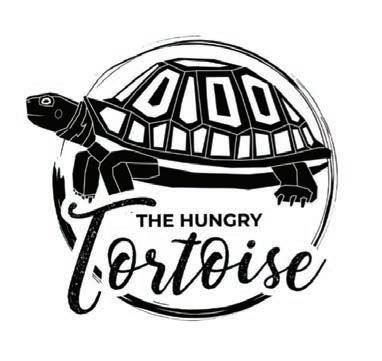
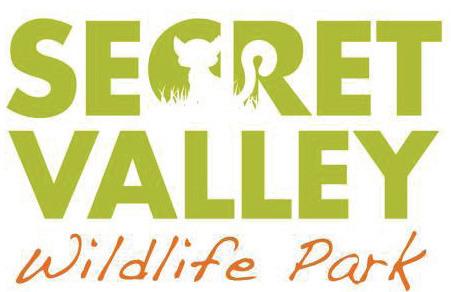

Summer days out in Ireland’s southeast
ANDREW MCDONALD HYPNOTHERAPIST
School’s over for the summer. Kids will be at home for three months and, if you’re a parent, your anxiety levels are probably soaring over how to keep them occupied for 12 weeks or so.
Kids get it good in this country! Take a short trip over the Irish Sea, and summer holidays are halved. Given a lot of families take a fortnight’s vacation at this time of year, that means only four weeks, not ten, requiring creative invention to nd child-friendly activities.
It needn’t really be all that di cult, though. Just think about what you most enjoyed as a child and, chances are, your kids will too. An added bonus is those fun days out needn’t cost much, or perhaps anything at all.
Kilkenny Castle has long been a favourite spot for young and old alike. Yes, if you want to visit the castle itself, it’s going to set you back a few Euro. However, the grounds are lled with fun waiting to be found at zero cost. e playground is an obvious choice. Less clear, though just as appealing, are walks along the river, down to the lake with its abundant wildlife, and through wooded areas. In many parts of the gardens surrounding the castle, the trees create shade which dims the light making them perfect for adventures and exploring.
It might not o er the same secluded spaces, but fun days out can be had at the Rock of Dunamase in County Laois. e ruins o er endless possibilities for children’s games and explorations. Whilst they’re busy playing, parents can take in the stunning views.
Wexford and Waterford are blessed with something Kilkenny and Laois can’t o er. Dazzling coastlines. Any trip to Tramore is likely to leave parents’ pockets feeling lighter, though great days out there are almost guaranteed, especially for children. ere are, however, also brilliant beaches where fun can be had for free. Bonmahon in the Deise County and Baginbun in the Model one are perfect places to build sandcastles and play in the sea.
Days out in the Tipperary mountains are sure to please young and old. Watch kids, and adults, marvel at the gravity hill phenomenon on Slievenamon overlooking Carrickon-Suir where your car will miraculously roll uphill. You can play a game to see who in your family works out what’s happening rst!
Like the grounds of Kilkenny Castle, Oak Park in Carlow is a wonderful place for childhood adventures. Try out the exercise machines in the open area, too. Children will get a great kick out of them. It’s also educational as there are plenty of information boards telling you about what lives and grows in the forests.
Whilst getting to any of these places is going to cost you in fuel, they are easy on your pocket and huge on fun when you get there!
Designer Minds Summer Camps are back

Designer Minds STEAM Summer Camps & Art Summer Camps are Coming! is summer, children throughout Kilkenny, Carlow, Waterford and beyond will be BUZZING with excitement at the end of every day because, Designer Minds, Ireland’s leading summer camp provider, are back! is year there are two exciting experiences to choose from: STEAM camps or Brand-New Art camps. All girls and boys currently in Senior Infants to 6th class, can get hands-on with projects and challenges in the company of like-minded friends, so they will never get bored. “It was fun, exciting and epic... are my 10-year-olds words. Highly recommended!” Christine, Galway Designer Minds STEAM Camps will be chock full of fun science experiments, awesome LEGO challenges, robotics and coding, Minecraft, teambuilding games, creative art projects, movie making and lots more! Designer Minds Art Camps will be jam packed with painting, drawing, upcycling, print making and even some digital design. Kids will have fun creating and making in a space where every child can be an artist! e camps are taking place this summer in Loreto Secondary School, Kilkenny. STEAM Camps (18th-22nd July) or (8th-12th Aug) and Art Camps (11th -15th Jul) or (15th-19th Aug). Staycationing? Be sure to look out for Designer Minds STEAM Camps and Art Camps in other counties too! e cost for each 5-day, 4 hours per day camp is €140, sibling discounts available. e Designer Minds friendly, welcoming and fully Garda-vetted leaders are looking forward to ensuring that your child enjoys the ultimate summer camp experience. So don’t get stuck on a waiting list – secure your spot now at www.designerminds.ie
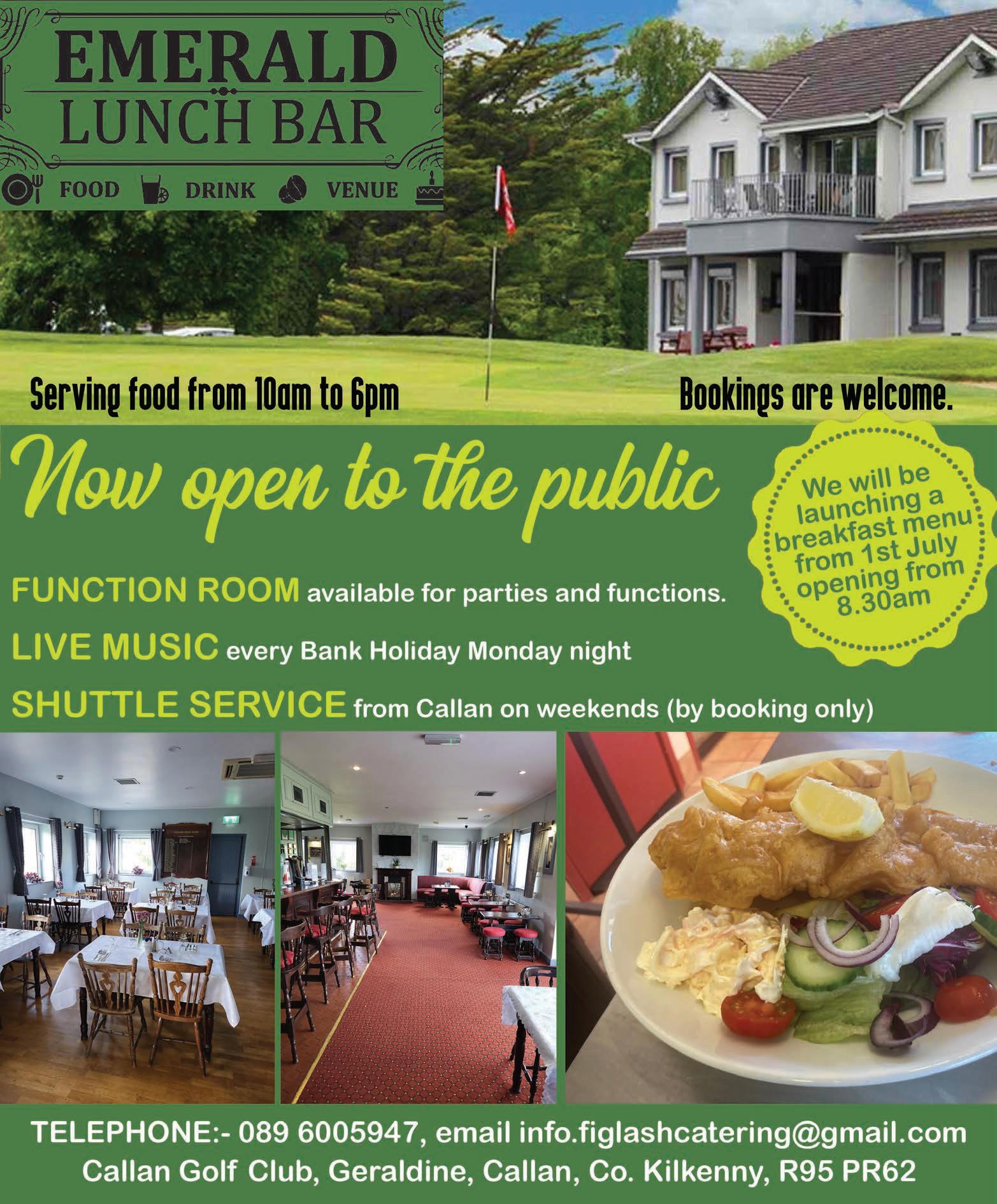


How sugar may play a key role in Alzheimer’s
A sugar molecule known as a glycan could play a key role in the development of Alzheimer’s disease, according to a new study.
For the study, researchers conducted a bit of “reverse engineering,” using brain tissues from ve people who died with Alzheimer’s disease.
If further research con rms the glycan nding, the molecule could serve as a target for early diagnostic tests, treatments, and perhaps prevention of Alzheimer’s disease, say the researchers.
Alzheimer’s disease is the most common form of dementia in the United States. A ecting an estimated 5.8 million Americans, the progressive disorder occurs when nerve cells in the brain die due to the buildup of harmful forms of proteins called amyloid and tau.
Cleaning up the diseasecausing forms of amyloid and tau is the job of the brain’s immune cells, called microglia. Earlier studies found that when cleanup is impaired, Alzheimer’s disease is more likely to occur. In some people, this is caused by an overabundance of a receptor on the microglia cells, called CD33.
“Receptors are not active on their own. Something needs to connect with them to block microglia from cleaning up these toxic proteins in the brain,” says Ronald Schnaar, professor of pharmacology at the Johns Hopkins University School of Medicine and director of the laboratory that led the study. Past studies from the researchers showed that for CD33, these “connector” molecules are special sugars. Known to scientists as glycans, these molecules are ferried around the cell by specialized proteins that help them nd their appropriate receptors. e protein-glycan combination is called a glycoprotein. In a bid to nd out which speci c glycoprotein connects with CD33, Schnaar’s research team obtained brain tissue from ve people who died of Alzheimer’s disease and from ve people who died from other causes from the Johns Hopkins Alzheimer’s Disease Research Centre which aided their ndings

Agriculture emissions targets to be agreed
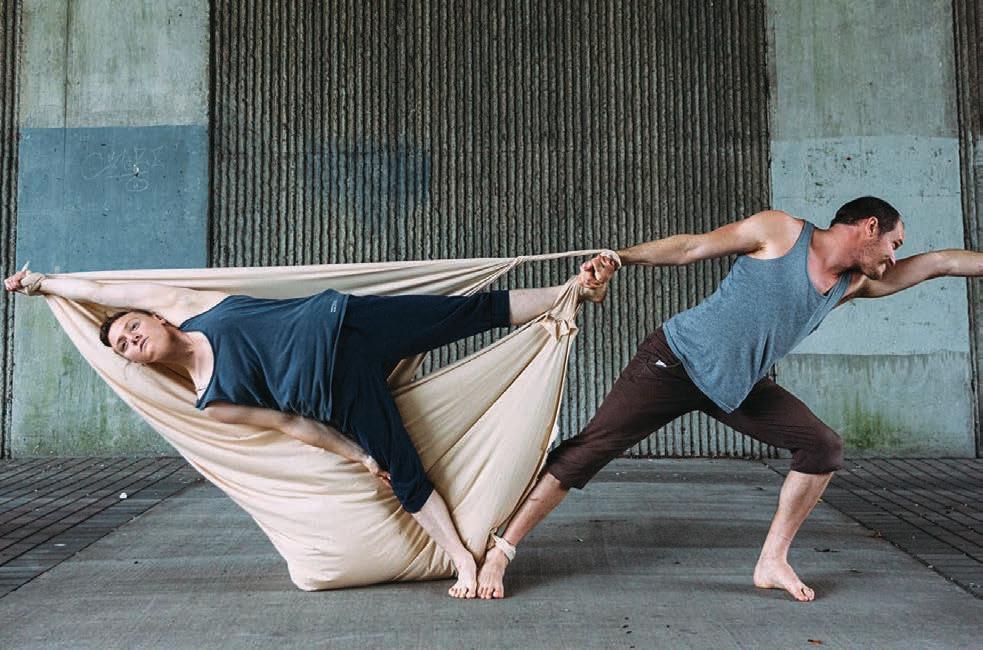
e coming weeks should see an agreement on emissions reduction target for agriculture — and any change in how methane from agriculture is calculated is unlikely to be considered.
Minister for Agriculture Charlie McConalogue is to meet Minister for the Environment Eamon Ryan to discuss how much of a cut agriculture will face. e sector’s reduction target has been set at between 22pc and 30pc of its 2018 levels, but an exact gure has yet to be decided.
Director General of the Environmental Protection Agency (EPA), Laura Burke, said recently that agriculture must clarify how it will achieve reductions.
“We are particularly concerned when we look at the agriculture sector... because there’s an up to 30pc reduction in methane required. And the question is how do we go about that,” she said. e challenge facing the country’s livestock sector in meeting the Government’s climate action targets was outlined by the EPA at the rst meeting of the Food Vision Beef and Sheep Group, which took place last week. e group, established by Minister McConalogue, is looking for ways to reduce emissions associated with the beef sector and follows the establishment of a similar dairy group earlier this year.
Measures
According to e Farming Independent, farm organisations were told at the meeting that full implementation of emission reduction measures already outlined “may just” get the agriculture sector to the minimum emissions cut demanded by Government.
However, the group was warned action could not be delayed and there must be progress made in the next two to three years, according to a source at the meeting.
Some farm organisations at the meeting highlighted that suckler cow numbers have already reduced signi cantly since 2018. “Herd cuts were in the back of everyone’s minds at the meeting,” said the source. “ ere was a mood among some that the dairy expansion sector has gone too far.
“Beef farmers can’t be held accountable for expansion in the dairy sector if it comes to herd cuts.”
Pressure is mounting on the Joint Oireachtas Agriculture Committee to hold an urgent meeting regarding the Government’s handling of methane emissions from livestock before the Dáil’s summer break.
Professor Myles Allen of Oxford University has agreed to address the committee amid ongoing scienti c and legal debate over the impact of bovine-sourced methane on global warming.
However, it’s understood any such meeting won’t now happen until the autumn.
Committee Chairman Jackie Cahill said “the only reason” the methane meeting has not yet occurred is because of the National Food Ombudsman Bill.
“ e Agriculture Minister wants that to go through prelegislative scrutiny,” said Mr Cahill. “It’s a very detailed, complicated bill and it’s going to take four or ve meetings to make progress.
“ at will take up all our time between now and the recess. e methane meeting will get preference when we come back in autumn. We’ve stakeholders saying the calculations are not being done correctly as regards ruminating animals.
“We want to give them a platform to bring forward their case; if they make a legitimate case, obviously it will have a very signi cant impact on the ceilings already applied,” Mr Cahill concluded.
All eyes on popular summer festivals!
Looking for something to do close by that won’t cost the earth? How about a visit to neighbouring Co. Tipperary, which was recently named one of the top holiday destinations in the world in the Condé Nast Travellers magazine. e premier county is set to embrace the title this summer, enhancing visitor trips with ample summer festivals kicking o this weekend.
Nenagh Castlefest will take place on Saturday and Sunday, June 25 and 26 with two days of music, food fayre, arts, crafts and, most importantly, fun! It is a free, daytime festival for families with a big emphasis on children’s entertainment, and this year’s event will feature a new fun fair of rides, face painting and more over the weekend.
Castlefest 2022 is set to the biggest yet with three stages of live music on Saturday, June 25. With a serious music line-up from Louise Morrissey featuring All Star Backing Band, Brendan Shine, e Conquerors Showband, Olivia Douglas and local rising star Aishling Ra erty.
From July 1 to 10 Clonmel’s popular Junction Arts Festival will celebrate 21 years as the highlight of the arts and entertainment calendar in Tipperary. With less than two weeks to go, excitement is building for the popular event which provides an important platform for regional and national artists from all disciplines.
Clonal is being transformed into a creative performance hub as the town prepares for an in ux of visitors from home and abroad.
Live performance and more importantly live audiences are back with a bang as the festival brings the best of local and regional art together with exciting national and international work, bring together a programme that promises to entertain and entrance.
An action-packed programme is complemented by the many tourist attractions in the town and surrounding areas making it the ideal staycation to kick o the summer season.
Programme highlights include; e Sofa Symphony, played live by a string quartet as musician Eamon O’Malley guides you through classical music’s greatest hits. Cikada Circus, Two acrobats (pictured above) welcome you into a world that yoyo’s between the harmonious and the absurd. TUS Films, Digital Animation student production teams have created a series of animated lms for the festival on the theme of ‘Hidden Histories’.
How Kilkenny has fared with a ‘better’ internet
Homes in Kilkenny became the rst ones in Ireland to try the new 2Gbps broadband internet, back in October 2021. e new network is at least twice as fast as the previous roll-outs, and soon it will cover another 64 Irish towns. e 2Gbps internet is being ushered by SIRO, a joint venture between EBC and Vodafone. Will it be enough to make Irish customers happy, particularly in areas which have little or no access to good broadband. Back in 2014, download speeds for xed broadband wouldn’t cross 14Mbps. Six years later, the speed more than six-folded: 93Mbps. Indeed, there has been a lot of investment in internet improvement lately.
SIRO’s ambition to bring 2Gbps broadband to 770,000 businesses and homes is expected to cost EUR 620 million. e e ort counts on the support of the European Investment Bank and a pool of local and international lenders. ese lenders are committed to expanding the necessary infrastructure for SIRO’s services. e past few years have put a lot of pressure on internet networks worldwide. e steep increase in users has created a demand for faster connections. After all, it’s nearly impossible to work, study, watch movies, or play your favourite games on NetBet, with a sluggish internet connection. Nowadays, better internet means more accessibility to public services. It’s also essential for academic and professional purposes.
e Vice-President of the European Investment Bank, Christian omsen, believes that the rapid expansion of broadband internet is essential for harnessing the bene ts of digitalisation. e institution is backing EUR 170 million for SIRO’s project. is support couldn’t come on a better occasion since SIRO expects to supply demands for 10Gbps internet for Irish businesses. Such an improvement will only be possible by expanding the current infrastructure.
Support your local Amphitheatre

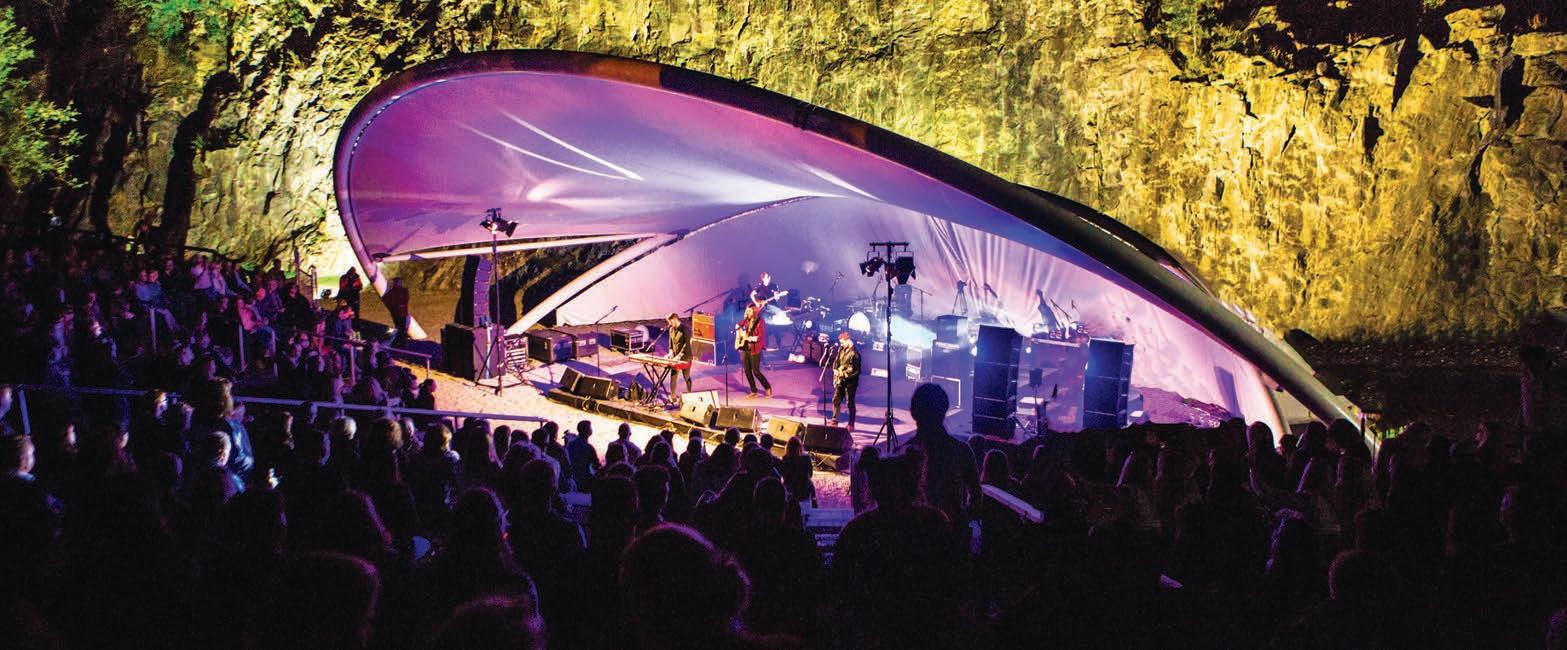
Ballykee e Amphitheatre is reopening its doors to the public again after 2 years of restrictions. ere is an exciting and varied line-up with some shows already sold out.
However with so much going on all over the country one or two concerts are not going as well and we are highlighting them in case they are drowned out because you might be disappointed to miss out.
On Saturday next June 25 our programme kicks o with a truly special occasion for folk and Traditional music lovers
Beginning at 3 o’clock with Kilkenny’s nest Reel to Reel followed by Cormac Begley, Ye Vagabond, Andy Irvine and Donal Lunny and nally, the wonderful Altan, this promises to be a concert to remember.
Not only do we have music, we have workshops featuring local history, the art and craft of the makers of musical instruments, Interviews with the stars of the show including the legendary Andy Irvine on his 80th birthday, should be worth going to on its own.
And to nish o the night we have the nale of all nales, all the musicians, singers and artists, together on stage in what should be a roof raising occasion.
You don’t want to miss it…
All of the above, plus Seani’s bar, food, shelter with Jim Maher M C ere will be tickets for sale on the gate. Under 12 Free with responsible adult Free parking Pass out, to get back in
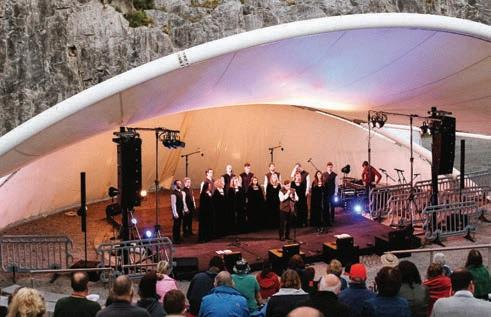


The Christian Brothers, John Lockes GAA Club and the purchase of a Hilly field

e recently launched book ‘Coláiste Éamann Rís’ is 400 pages of the history and times of the CBS School in Callan, county Kilkenny. It celebrates 154 years and tells the story of the school from the early days and those who passed through the gates. One contributor to the book is Callan man Barrie Henriques. Over the next two weeks, we reproduce Barrie’s memories of those years.
BY BARRIE HENRIQUES

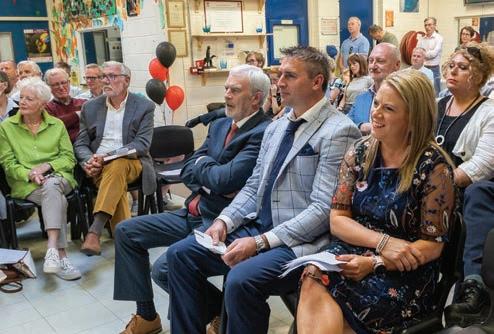
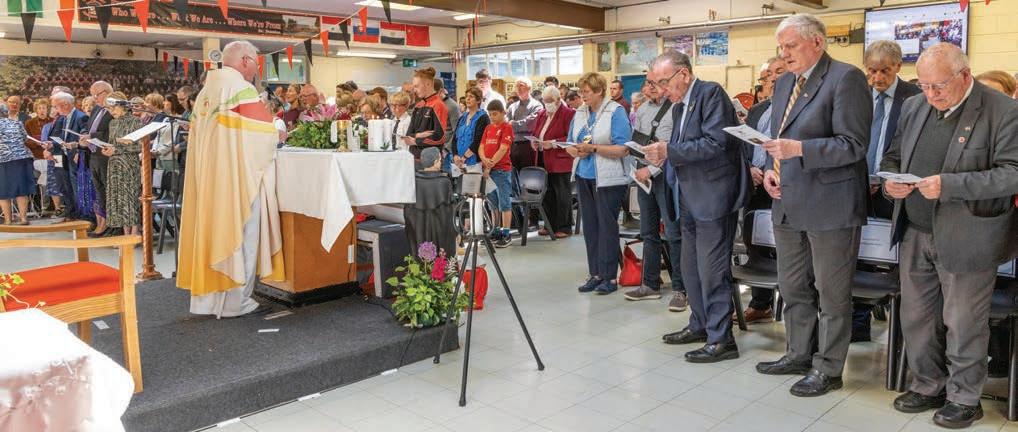
Photos: Ignatius O’Neill Part one
Ah the Christian Brothers, but more correctly the Irish Christian Brothers founded by Callan man, Edmund Rice back in the days. For the purpose of this diatribe, I will reference them as e Brothers.
I was born into an Ireland that coveted its neutrality as Homo sapiens indulged in a furore of blood-letting costing the deaths of countless millions. In Tuam of my beloved Galway, my education started with “the Nuns”, but more precisely with the Presentation Nuns being that the Mercy Nuns were also ensconced further out the Dublin Road. Tuam was a great centre of learning where the Archbishopric of the Arch Diocese was centred, and where we enjoyed second level education from both Convents, the Brothers, and St. Jarlath’s College. Additionally, a very ne Technical school provided education in the nonacademic eld of learning. ere was “plenty of learning” around the place. On completion of the second- class semester with the Nuns, we bade farewell to all our girl- friends-including the pitiable little girls from the Bon Secour Mother and Baby home- our band of ten-year olds marched two by two up the Dublin Road to the boy’s school. Our embryonic masculinity -we were big lads- had really turned a corner.
DRESSED IN ALL BLACK CASSOCKS
Although our rst teacher was a lay teacher- Paddy Quinn God Rest him- there were plenty of Brothers abounding. Dressed in their all-black cassocks, and wearing their distinctive biretta with the “three-pronged” top, they paraded around the yard in twos with menace. Even at that early age, there was an undertone perception of danger. Some carried a leather strap in the cummerbund of their sultannes. On re ection, that strap, was a Government Issue of menace and pain in the hands of many who were not averse to using it unconditionally.
My regard for the Brothers was transient. I have known some vindictive savages who got great pleasure from dishing out unbelievable pain and insult. I knew many more who were Apostles of Edmund Rice in every sense. I was honoured and privileged to number Brothers as very endearing and staunch friends. Some I remember in my daily Rosary, and who have gone to be judged. place. Children were abused in every which way possible, but particularly in a physical punishing way. It was an on-going process. ere was always “a stick” in every house. It got plenty of use, to the extent that it was often replaced. When you heard your Mother say that your father will take the belt to you when he comes home, you were in severe trouble. Violence was endemic in the Ireland in which I developed. Women were but chattels, and children were seen but never heard, and chastised; how they were chastised! It bordered on the barbaric.
But that was the culture of the times where Church ruled, the State submitted, and the poorer you were the more you su ered.
It was the culture of the times, and nobody saw anything wrong with that. And that culture was endorsed in all schools.
I hated school. I was terri ed from the rst day ‘till last. ere were many like me. Right up to my Leaving Cert I was frightened. One or two lads took on the Brothers, but they paid an awful price. e happiest day of my life was the day I went out the gate after the last Leaving Cert exam.
Fast forward some twenty years or so. Like 60,000 of the nest our island produced every year from the 50s to well into the 80s, I emigrated. I was lucky to get employment with Aer Lingus in Manchester. Travelled the World over the twenty years or so, got married, had four children, and realised my ultimate ambition of returning home in 1973. We settled in Callan, and developed our Bar business. Initially it was a tough settling in process, but eventually I got involved in the activities of the town, and so started a culture that embraced so much to improve the town.
I was Chairman of the John Lockes Club, on the Parents School Development Committee, Callan United AFC, Racquetball Club, etc.
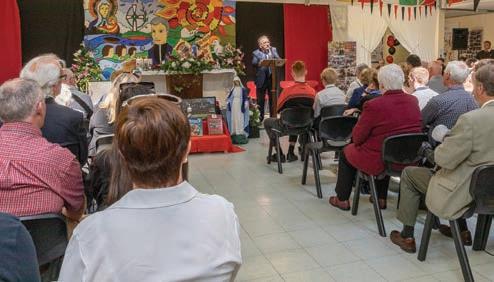
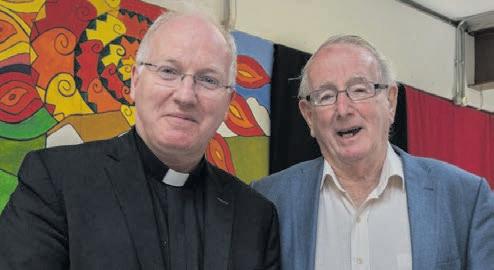
DREAMS OF THEIR OWN VENUE FOR GAA
Most had ambitions of making drastic improvements to their organisations. e GAA Club decided to buy their own place. e Brothers decided that their establishment on West Street did not suit the purpose, and a new school was paramount. Marvellous Committees were formed on both levels. £40,000 – an outlandish gure- was paid for a hilly eld that was developed for nearly £100,000. It stands as testament to the Trojan work of so many great people, many of whom are gone to their maker.
At a meeting of the School’s Committee, Br. S.T. O Duinn intimated that a new green eld site should be found on the outskirts of the town. Cunningham’s eld (present location of Collaiste Eamon Ris) was earmarked. Eventually the process was agreed, a price was struck, and the wherewithal of the money (£80,000) was now the subject of deep discussion. e town somehow had to address a situation of how and where a cumulative total of some £120,000 could be quarried. To compound matters the Country was not in a good place, with unemployment rampant and the emigrant ships full to the gunwales. e Department of Education of the day made the building of a new Secondary School contingent of an acceptable site being acquired in the town. Despite ferocious lobbying, the Department held tough until the site was procured. ere were no options o ered or even mentioned on the site issue. Others through this tome will present the History of the building of Coláiste Eamon Rís. But my involvement was centred on producing the requisite site. To that end, the dreaded “FUNDRAISING” became the password among an enormous number of people. Many, like myself were faced with a double-barrel demand. Day and night, we were on the road selling this, signing promissory notes, asking for support, sending the customary begging letters to every known contact nationally, the UK, and America. Fundraising ideas were taken on board, evaluated, and decisions were made. Farmers were asked to rear calves. Wherever there was a shilling to be made we were on it. We ran so many cabarets in so many locations, that many of our Committee were in mortal danger of alcohol fatigue. e length, breadth of the country roads were traversed, and some.
Photos of the launch of the book courtesy of Ignatius O’Neill Continued next week


